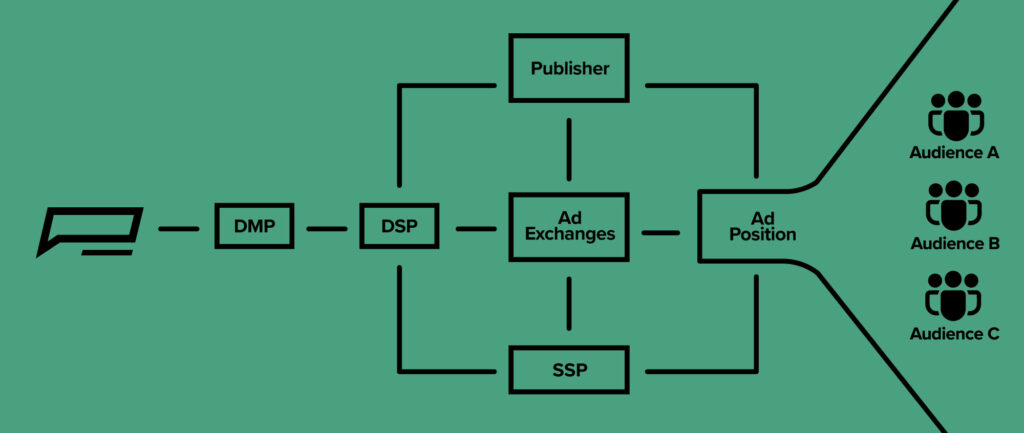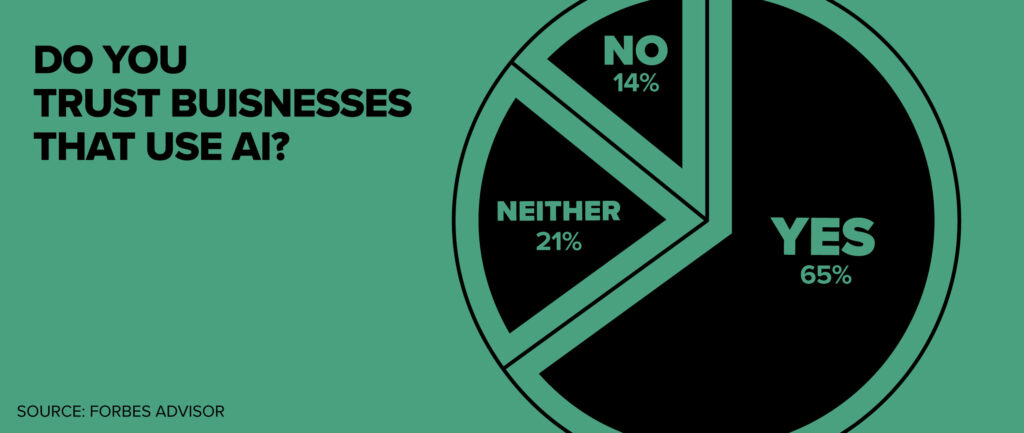In advertising, artificial intelligence (AI) has been used long before tools like ChatGPT and DALL-E began making headlines. Many steps of the ad buying process have been automated through programmatic advertising, yielding profound benefits. This automation enables advertisers to execute campaigns more swiftly and accurately. With the increasing availability of AI tools, even more innovation is becoming feasible, and advertising companies should consider how they can continually benefit from it.

The Current State of Programmatic Advertising
Before programmatic advertising, the ad buying and selling process relied on human actions. Advertisers had to manually identify their target audience, choose keywords, place bids, and form personal relationships with ad publishers to launch an ad campaign. Not only is this process time consuming, but it’s also vulnerable to challenges like human error or limited publisher relationships.
Programmatic advertising doesn’t eliminate human input from the ad buying process but rather streamlines it. AI uses large amounts of data to make decisions about where to place ads and who to target.
One of the most transformative changes from manual to programmatic advertising is the use of real-time bidding, or RTB. Rather than an advertiser contacting a publisher to place a bid on ad space, advertisers set the parameters, such as the maximum amount they’re willing to spend, and AI analyzes the submitted bids. The highest one is displayed in the open space—a process that’s completed in less than a second. Programmatic advertising also allows marketers to see how their ads are performing and make needed changes without needing to wait for the campaign to finish first.

Embracing Generative AI
With AI being relatively new in the eyes of the public, it makes sense that there’s some hesitance to adopt it. However, advertisers already know that its capabilities are worth embracing.
1. Analyzing User Data
AI is able to parse through exponentially more data than a human in the same amount of time, significantly increasing the likelihood of successfully targeting the right audience for advertisements. Knowing essential user details like geographic location, age, and other demographic data means that money won’t be wasted showing ads to viewers who are not likely to respond to them.
2. Predicting Campaign Performance
AI can also allow advertisers to predict the performance of an ad campaign and compare its predictions to the actual results, guiding advertisers to the revisions and strategies that will ensure maximized return on ad spend.
3. Creative Ideation
Generative AI can also help with creating campaign copy and designs. In the future, advertisers may be able to harness generative AI to make subtle tweaks in color, language, and other elements of an ad to appeal to individual customers without having to launch entirely new campaigns.

AI from Theory to Practice
While AI can be a powerful tool for advertisers, its role isn’t to entirely replace them. Any content generated by AI must undergo review and approval before reaching customers. Given its capacity to optimize audience segmentation and offer advanced personalization, AI should be embraced as an integral part of the advertising process rather than feared or disregarded.
Advertisers already familiar with programmatic advertising can leverage their existing knowledge and use it as a foundation for further understanding. In the future, new tools are likely to emerge, and it’s important to remain updated with how they work and how they can elevate your campaigns.


